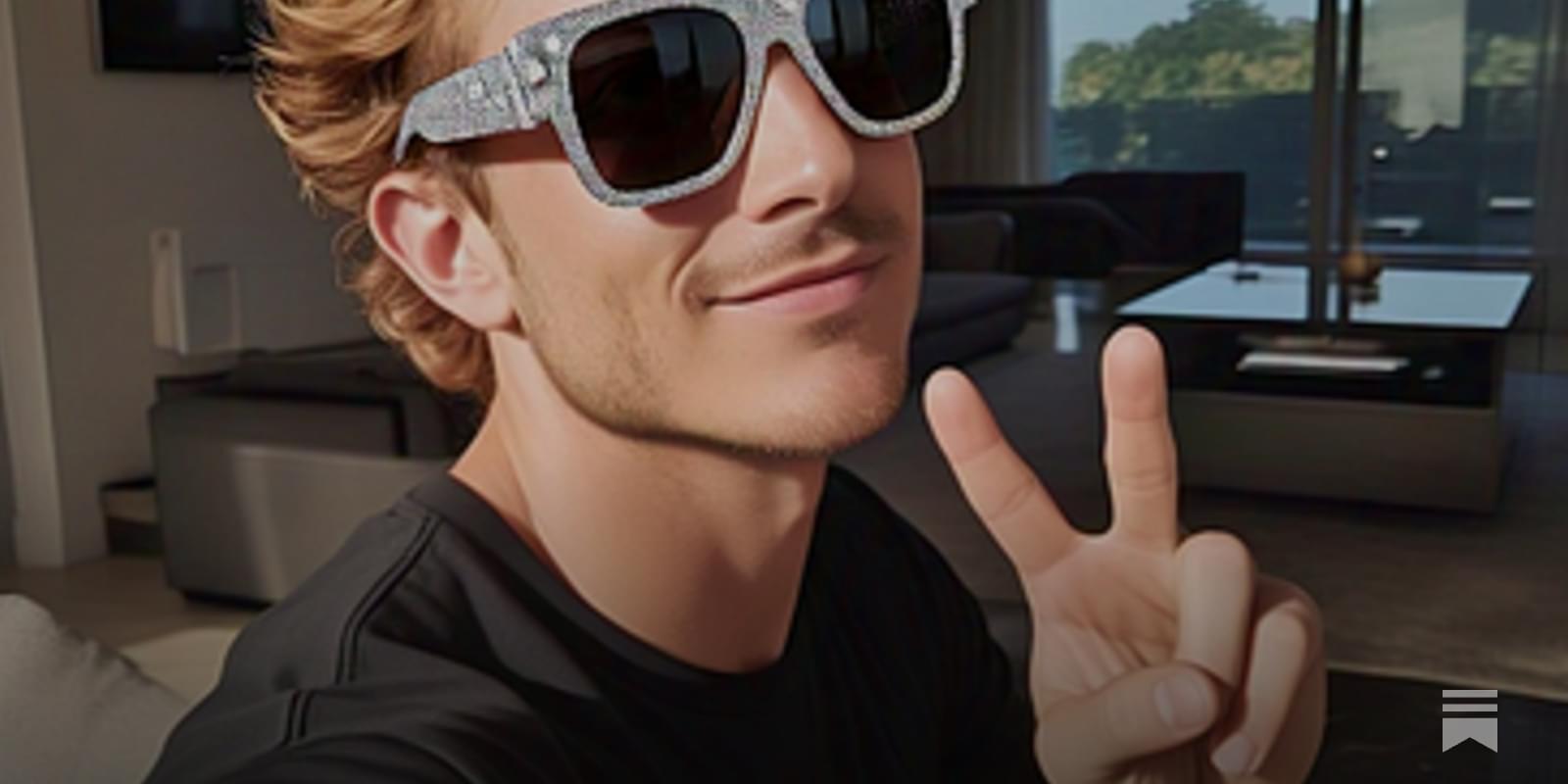With Google’s latest AI model, Gemini 2.0, launched in December, the company is making big moves in AI. Brin’s message is clear, the race to AGI is on, and Google plans to win it.



In today’s AI news, Meta, the parent company of Facebook, and other leading social media platforms, is looking to raise as much as $35 Billion to build data centers in the US. Apollo Global Management Inc., an alternative asset manager has discussed providing a major part of the financing, said the people, who asked not to be identified. KKR & Co. is also a part of the investor group.
In other advancements, With so much software now getting written by AI, having a window into its security can be a challenge. That’s the premise of Archipelo, a San Francisco-based cybersecurity startup that is today emerging from stealth with $12 Million in funding. Archipelo’s pitch is that it has a platform for “Developer Security Posture Management” (DevSPM).
S integration with Suno, you can turn simple, creative requests into songs. ‘ + And, In its annual letter, payments giant Stripe declared that it was “seeing an AI boom” with its data, revealing that artificial intelligence startups are growing more rapidly than traditional SaaS companies have historically. In a chart, Stripe showed that the top 100 AI companies were able to achieve $5 million in annualized revenue in 24 months in 2024 compared to the top 100 SaaS companies taking 37 months.
In videos, ever wondered how to enhance your AI performance? IBM’s Susan Eickhoff shows how to boost AI performance using an ensemble of models, combining traditional AI and large language models. Learn structured data analysis and dynamic prediction methods.
And, since its launch in 2020, Project Aria has propelled research across the world to advance the state of the art in machine perception and AI, through access to cutting-edge research hardware and open-source datasets, models, and tooling. Today, Meta is excited to announce the next step in this journey: the introduction of Aria Gen 2 glasses.
Then, join Dr. Ben Armstrong Executive Director, MIT Industrial Performance Center at the 2025 MIT Bangkok Symposium for an insightful session entitled Positive-Sum Automation & Artificial Intelligence. MIT’s working group on Generative AI and the Work of the Future is studying how dozens of large companies are adopting generative AI to improve productivity…
S largest model to date. Chen speaks about what the new model says about the AI scaling wall, how scaling traditional GPT models compares to reasoning models. + Thats all for today, but AI is moving fast — like, comment, follow, and subscribe for more AI news!

In our creative writing tests—designed to measure how well these models craft engaging stories that actually make sense—Claude 3.7 delivered narratives with more human-like language and better overall structure than its competitors.
Think of these tests as measuring how useful these models might be for scriptwriters or novelists working through writer’s block.
While the gap between Grok-3, Claude 3.5, and Claude 3.7 isn’t massive, the difference proved enough to give Anthropic’s new model a subjective edge.

Researchers from three of Virginia’s premier universities, including the University of Virginia’s Homa Alemzadeh, aim to take the risk out of self-driving vehicles by overcoming inevitable computer failures with sound engineering.
Cutting-edge research from three top Virginia universities, led by the University of Virginia’s Homa Alemzadeh, is on a mission to revolutionize the safety of self-driving vehicles. With a substantial $926,737 grant from the National Science Foundation, this powerhouse team is dedicated to pinpointing and neutralizing potential computer failures in autonomous vehicle systems.
By harnessing this insight, they aim to fortify the resilience of the entire system and proactively eliminate safety risks. Alemzadeh, a trailblazing associate professor of electrical and computer engineering at UVA’s School of Engineering and Applied Science, is joined by the esteemed William & Mary professor of computer science, Evgenia Smirni, and the visionary lead investigator and George Mason University assistant professor of computer science, Lishan Yang.
“The Ouroboros Code” explores the intersection of science and spirituality through the lens of digital alchemy and self-simulation. Authored by Antonin Tuynman, the book presents a philosophical framework called “The Transcendental Metaphysics of Pancomputational Panpsychism” exploring how consciousness may be the fundamental ground of existence and the universe a self-modifying code. Tuynman investigates topics like the nature of intelligence, the limits of computation, and the possibility of artificial general intelligence. The book draws on concepts from physics, information theory, mathematics, and various spiritual traditions, aiming to bridge the gap between objective and subjective realities. It builds upon the author’s previous works and incorporates insights from various scientists and thinkers. Ultimately, the book seeks to understand how the universe, through a recursive process, generates and experiences itself. *Available as a Kindle eBook, paperback, and Audible audiobook: https://www.amazon.com/Ouroboros-Code?tag=lifeboatfound-20… #SelfSimulation #Pancomputationalism #DigitalPhysics #ComputationalPhysics

Dr. Rumi Chunara: “Our system learns to recognize more subtle patterns that distinguish trees from grass, even in challenging urban environments.”
How can artificial intelligence (AI) help improve city planning to account for more green spaces? This is what a recent study published in the ACM Journal on Computing and Sustainable Societies hopes to address as a team of researchers proposed a novel concept using AI with the goal of both monitoring and improving urban green spaces, which are natural public spaces like parks and gardens, and provide a myriad of benefits, including physical and mental health, combating climate change, wildlife habitats, and increased social interaction.
For the study, the researchers developed a method they refer to as “green augmentation”, which uses an AI algorithm to analyze Google Earth satellite images with the goal of improving current AI methods by more accurately identifying green vegetation like grass and trees under various weather and seasonal conditions. For example, current AI methods identify green vegetation with an accuracy and reliability of 63.3 percent and 64 percent, respectively. Using this new method, the researchers successfully identified green vegetation with an accuracy and reliability of 89.4 percent and 90.6 percent, respectively.
“Previous methods relied on simple light wavelength measurements,” said Dr. Rumi Chunara, who is an associate professor of biostatistics at New York University and a co-author on the study. “Our system learns to recognize more subtle patterns that distinguish trees from grass, even in challenging urban environments. This type of data is necessary for urban planners to identify neighborhoods that lack vegetation so they can develop new green spaces that will deliver the most benefits possible. Without accurate mapping, cities cannot address disparities effectively.”

A new algorithm, Evo 2, trained on roughly 128,000 genomes—9.3 trillion DNA letter pairs—spanning all of life’s domains, is now the largest generative AI model for biology to date. Built by scientists at the Arc Institute, Stanford University, and Nvidia, Evo 2 can write whole chromosomes and small genomes from scratch.
It also learned how DNA mutations affect proteins, RNA, and overall health, shining light on “non-coding” regions, in particular. These mysterious sections of DNA don’t make proteins but often control gene activity and are linked to diseases.
The team has released Evo 2’s software code and model parameters to the scientific community for further exploration. Researchers can also access the tool through a user-friendly web interface. With Evo 2 as a foundation, scientists may develop more specific AI models. These could predict how mutations affect a protein’s function, how genes operate differently across cell types, or even help researchers design new genomes for synthetic biology.

Researchers from the University of California, Santa Barbara (UCSB) designed a “material-like” collective of programmable micro-robots, which can behave like a fluid or bond together to create new solid structures. The technology could lead to the development of a new sub-field of robotics.
The UCSB scientists set out to design simple robots that could work together, like a colony of ants or other collective groups. The study, recently published in Science, describes micro-robotic units that can switch from a “fluidizing” state to a more “solid” shape based on the rotational state of the robots.
The idea is ripped straight from science fiction concepts like the T-1000 from Terminator 2: Judgement Day. The researchers claim they have turned this theoretical vision into reality after studying embryonic morphogenesis, the biological process through which cells can change their shapes and turn into different tissues in the human body.
It is unclear if this is an autonomous robot, but I want one.🤖
NEO Gamma is the next generation of home humanoids designed and engineered by 1X Technologies. The Gamma series includes improvements across NEO’s hardware and AI, featuring a new design that is deeply considerate of life at home. The future of Home Humanoids is here.
Website: www.1x.tech.
X: https://twitter.com/1x_tech.
LinkedIn: / 1x-technologies.
Instagram: / 1x.technologies
Michael Le Page explains how this “multi-region brain organoid” contains 80 per cent of the cell types found in a 40-day-old fetal brain.
The team behind it aims to study conditions like autism and schizophrenia — with some suggesting they could one day be used in artificial intelligence. But this all throws up major ethical issues…
Hear the full story on New Scientist Weekly, a news podcast for the insatiably curious, hosted by Rowan Hooper and Penny Sarchet.
–
Learn more ➤ https://www.newscientist.com/podcasts/
Subscribe ➤ https://bit.ly/NSYTSUBS
Get more from New Scientist: